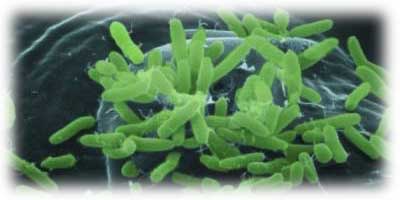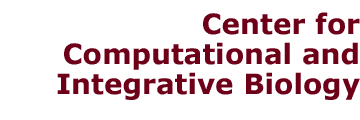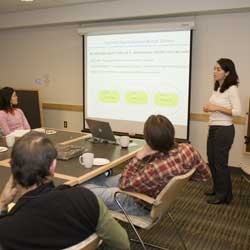 |
|||||||||||||||||
|
|||||||||||||||||
|
Ausubel Lab
Welcome to the Laboratory of Fred Ausubel in the Department of Molecular Biology at The Massachusetts General Hospital, a joint department with the Department of Genetics at the Harvard Medical School. The laboratory's primary interest is in identifying and characterizing the molecular aspects of the process of signal transduction in prokaryotes and in hosts that interact with prokaryotes, from the discovery of virulence factors in bacteria and fungus to host defense responses in plants, insects, worms and mammals. These pathogen-host interactions are explored a variety of ways, both experimentally and computationally.
Our laboratory is now divided 50/50 between the Arabidopsis and C. elegans systems. The rationale is that there is a growing body of evidence demonstrating that many of the underlying mechanisms of microbial pathogenesis and corresponding host defense responses are similar in plants and animals and that the study of Arabidopsis and C. elegans defense responses will be synergistic. One example of how bacterial virulence factors are similar in plant and animal pathogens is the conservation of so-called type III protein secretory mechanisms that are involved in the translocation of proteinaceous virulence factors into host cells. Another example is our discovery that Pseudomonas aeruginosa utilizes a shared subset of virulence factors to infect both plants and animals. From the host perspective, there are key similarities in the signaling pathways involved in animal immune responses and this conservation may extend to aspects of the plant defense response. Taken together, these observations argue strongly that a comparative analysis of Arabidopsis and C. elegans is likely to identify ancient components of the eukaryotic host defense response. An excellent example of the synergism between the Arabidopsis and C. elegans projects in our lab is the identification of MAPK signaling cascades as conserved components of the innate immune signaling in both organisms. The use of experimentally tractable model hosts allows us to perform genetics on both sides of the host-pathogen interaction. To better understand the suite of bacterial virulence factors that are used to inflict damage on the host and to circumvent the host’s defense responses, we are developing genomic tools for a pathogenic isolate of P. aeruginosa, strain PA14, which is extremely virulent in both the Arabidopsis and C. elegans models. A full-genome, non-redundant library of defined transposon insertions will allow for high-throughput, saturating screens to identify novel virulence factors, and candidate strains will be selected for studies utilizing combinatorial genetics between sets of host and pathogen mutants. |
|||||||||||||||||
|
|
|||||||||||||||||
| Copyright © 2006-2012 The Massachusetts General Hospital | |||


 The responses by which multicellular eukaryotic hosts defend themselves from pathogen attack have only recently begun to be subjected to rigorous genetic analysis. This sort of analysis requires a tractable genetic system for the host and well-characterized host-pathogen interactions. Whereas vertebrates, with the possible exception of zebrafish, are generally unsuitable for such studies,
The responses by which multicellular eukaryotic hosts defend themselves from pathogen attack have only recently begun to be subjected to rigorous genetic analysis. This sort of analysis requires a tractable genetic system for the host and well-characterized host-pathogen interactions. Whereas vertebrates, with the possible exception of zebrafish, are generally unsuitable for such studies,